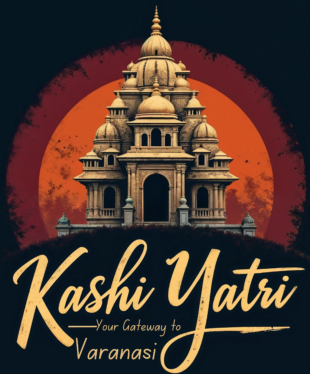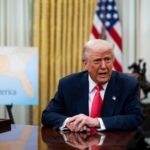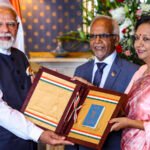How a Unique Diplomatic Friendship Strengthened Ties Between the US and India, Fostering Growth in Defense, Trade, and Geopolitical Strategy
The diplomatic relationship between Indian Prime Minister Narendra Modi and former US President Donald Trump brought a distinctive personal warmth to international relations. This partnership, often called a “bromance,” was more than a friendship; it was a strategic alliance that fueled advancements in defense, trade, and diplomacy. Despite contrasting national interests, the two leaders laid the groundwork for a legacy of cooperation that endures in US-India relations.
1. The Start of a Strategic Friendship
Diplomatic Outreach from New Delhi to Washington
When the newly elected Trump administration took office in 2016, India was among the first to extend a hand of congratulations, signaling the importance of continued relations. This early move underscored India’s awareness of the US’s critical role on the global stage and India’s aspirations to solidify its place as a major strategic ally. Despite differing political agendas, both administrations recognized mutual opportunities for cooperation on nationalistic policies, which fostered an environment for collaboration.

A Shared Focus on National Interests
Both administrations promoted a spirit of nationalism—through “Make in India” and “America First”—creating economic policies focused on job creation, domestic industry, and economic resilience. These shared ideals shaped the foundation of discussions that followed, especially in sectors like trade, technology, and defense. The leaders’ emphasis on national priorities provided a basis for balanced negotiations, helping manage potential friction.
2. Key Moments That Shaped a New Era of US-India Relations
Houston’s “Howdy Modi” Event and Cultural Diplomacy
In 2019, the Indian-American community witnessed a landmark event when Modi addressed a record crowd of Indian-Americans in Houston, Texas, at “Howdy Modi.” Trump’s participation highlighted his administration’s appreciation for the Indian diaspora’s influence and marked a public display of admiration between the leaders. By publicly lauding the relationship, the two leaders showed the strength of people-to-people ties, which added a cultural dimension to their political partnership.
Reciprocal Engagement with “Namaste Trump” in Ahmedabad
In 2020, India hosted Trump in Ahmedabad, Gujarat, for the “Namaste Trump” event. This gathering highlighted the cross-cultural ties between the nations, with both leaders speaking to shared values of democracy and prosperity. With more than 100,000 attendees, the spectacle symbolized the mutual respect both administrations had for one another and the importance they placed on bilateral cooperation. The scale and enthusiasm of these events highlighted the public’s embrace of the partnership.

Global Significance of Public Diplomacy
These events received significant global media attention. More than just celebrations, they showcased the relationship between the two countries as a strong alliance grounded in mutual respect and admiration. This brand of personal diplomacy allowed for stronger relations and set a new precedent in international alliances.
3. Strengthening Defense and Security Cooperation
Elevation of India as a Major Defense Partner
During the Trump administration, the US granted India “Major Defense Partner” status, giving India access to high-level military technology. This was a pivotal moment in their defense relationship, highlighting a new level of trust and cooperation. The designation reflected the growing alignment in defense strategies, with both countries committed to safeguarding regional stability.
Key Military Deals and Strategic Exercises
Under this strengthened relationship, India procured essential military assets, including advanced helicopters and other defense equipment, enhancing India’s security capabilities. Joint military exercises like “Tiger Triumph” reflected a commitment to security collaboration in the Indo-Pacific region. This focus on defense fostered security in a region marked by significant geopolitical challenges, showcasing a shared interest in regional peace and stability.

Unified Vision in the Indo-Pacific Region
Concern over increasing influence from regional powers like China motivated both countries to cooperate on Indo-Pacific policy. The two leaders’ joint endorsement of a “Free and Open Indo-Pacific” emphasized a commitment to maritime security and regional stability. Cooperation within the Quad alliance, which includes the US, India, Japan, and Australia, further reinforced this commitment to peace and security in the region.
4. Economic Partnership in the Face of Trade Disputes
Navigating Trade Tensions and Tariffs
While the economic relationship grew, it was not without challenges. Trade issues emerged as a sticking point, particularly with increased tariffs on Indian goods such as steel and aluminum. India responded with its own tariffs, creating a cycle of trade tensions. However, the diplomatic relationship helped manage these conflicts, ensuring that broader economic cooperation continued to flourish despite obstacles.
Establishment of a Strategic Energy Partnership
The launch of the US-India Strategic Energy Partnership allowed India to diversify its energy supply sources, reducing reliance on other energy suppliers and enhancing energy security. The US benefited from this arrangement, as it became a key exporter of energy resources like crude oil, liquefied natural gas (LNG), and coal to India. This partnership contributed to India’s economic growth while bolstering US exports, illustrating the mutual advantages of their alliance.
Investment in Technology and Digital Trade
US technology firms significantly expanded their presence in India, encouraged by the Indian government’s policies for a digital economy. Companies like Google, Amazon, and Facebook increased their investments, fostering technological collaboration between the two countries. This alignment boosted India’s digital sector and paved the way for knowledge-sharing and innovation, reinforcing India’s role as a technology leader.
5. The Role of Personal Diplomacy in Strengthening Bilateral Ties
Leadership Styles That Resonate
Both leaders were known for their bold, assertive styles, which enabled candid discussions. This mutual understanding helped create an environment of trust that was vital for navigating sensitive issues. Their personal bond encouraged open dialogue, fostering an atmosphere in which difficult discussions could proceed with flexibility and respect.

Engaging the Indian-American Community
Through events like “Howdy Modi” and “Namaste Trump,” both governments engaged directly with the Indian-American community. Recognizing this demographic’s cultural and economic impact, these events strengthened the connection between the US and India, reinforced by the public admiration and respect of the two nations. The engagement showcased the cultural bridge that the Indian-American community has built between the two countries, amplifying people-to-people ties.
Overcoming Diplomatic Barriers
This personal bond allowed the leaders to address challenges in defense, trade, and policy with fewer diplomatic barriers. Their rapport proved instrumental in fostering smoother cooperation on critical issues, illustrating how personal diplomacy can support broader policy goals.
6. The Challenges and Criticisms
Balancing Economic Interests
The “America First” and “Make in India” agendas sometimes collided, particularly when it came to trade policies. Both governments were keen to promote domestic industries, leading to disagreements on tariffs and trade practices. However, the diplomatic ties prevented these issues from escalating into broader conflicts, illustrating the resilience of their relationship despite economic challenges.
Addressing Human Rights Concerns
Both administrations faced criticism for policies viewed as exclusionary by some. Trump’s travel bans and India’s Citizenship Amendment Act (CAA) sparked debate on human rights issues, creating diplomatic challenges. While both leaders maintained their domestic policy stances, managing these criticisms highlighted the complexities of navigating a friendship between two democracies with distinct political landscapes.
7. A Legacy That Endures Beyond Leadership Changes
Ongoing Indo-Pacific Strategy
The strategic vision for a “Free and Open Indo-Pacific” remains a cornerstone of US-India relations. This shared approach to regional security continues to shape policy, as subsequent administrations build upon the framework established during the Modi-Trump era. The Quad alliance remains a testament to the lasting impact of their regional strategy.

Sustained Defense Cooperation
The agreements and military collaborations initiated during this period have set a strong foundation for ongoing defense relations. Continued joint exercises, high-level defense dialogues, and technological partnerships ensure that the alliance remains robust, benefiting both nations.
Strengthening the Role of the Indian-American Community
This period spotlighted the importance of the Indian-American community, solidifying its role as a vital link between the two countries. The legacy of this engagement continues, with the diaspora community playing an increasingly significant role in the political and economic landscape of the US.
Influence on Future Diplomatic Engagements
The bond between the two leaders serves as a model for future diplomatic engagements. Their relationship highlighted the power of personal diplomacy, demonstrating how respect and mutual understanding can foster collaboration and resolve challenging issues. This legacy underscores the potential for personal bonds to shape international relations positively.
8. Conclusion: The Long-Term Impact of a Unique Diplomatic Friendship
The friendship between the US and India during this period was more than just a political relationship; it was a partnership driven by mutual respect, shared strategic interests, and personal rapport. Their cooperation in defense, economic policy, and regional security left a lasting impact that continues to influence US-India relations.

As new administrations navigate an increasingly complex world, the foundation laid by this partnership serves as a reminder of the strength of diplomacy and the enduring significance of friendship in international relations. Their relationship exemplified the potential for mutual respect and shared values to transcend leadership changes, making the US-India alliance an enduring force in global diplomacy.







